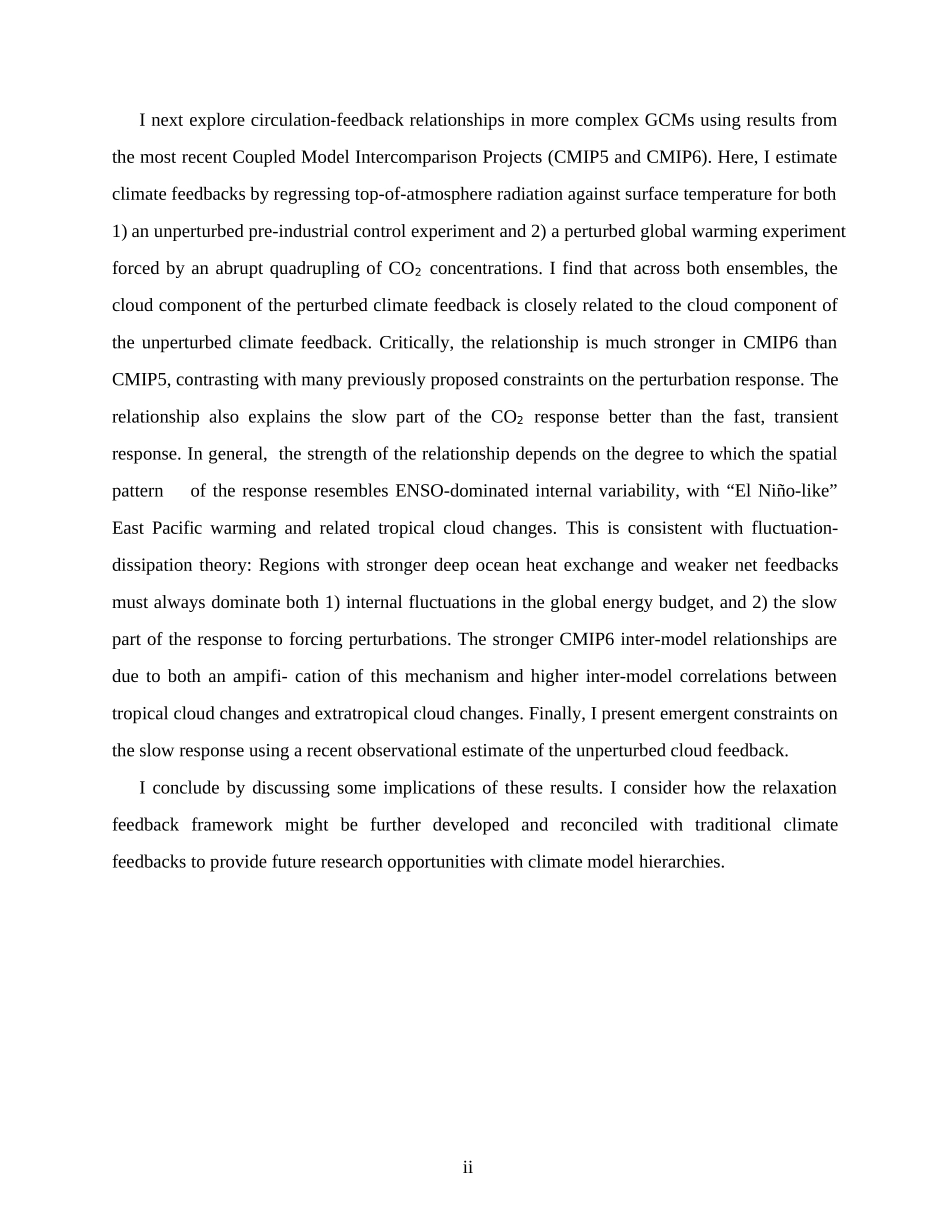iABSTRACTLINKS BETWEEN CLIMATE FEEDBACKS AND THE LARGE-SCALE CIRCULATION ACROSS IDEALIZED AND COMPLEX CLIMATE MODELSThe circulation response to anthropogenic forcing is typically considered in one of two distinct frameworks: One that uses radiative forcings and feedbacks to investigate the thermodynamics of the response, and another that uses circulation feedbacks and thermodynamic constraints to inves- tigate the dynamics of the response. In this thesis, I aim to help bridge the gap between these two frameworks by exploring direct links between climate feedbacks and the atmospheric circulation across ensembles of experiments from idealized and complex general circulation models (GCMs). I first demonstrate that an existing, widely-used type of idealized GCM — the dynamical core model — has climate feedbacks that are explicitly prescribed and determined by a single parame- ter: The thermal relaxation timescale. The dynamical core model may thus help to fill gaps in the model hierarchies commonly used to study climate forcings and climate feedbacks. I then perform two experiments: One that explores the influence of prescribed feedbacks on the unperturbed, cli- matological circulation; and a second that explores their influence on the circulation response to a horizontally uniform, global warming-like forcing perturbation. The results indicate that more stabilizing climate feedbacks are associated with 1) a more vigorous climatological circulation with increased thermal diffusivity, and 2) a weaker poleward displacement of the circulation in re- sponse to the global warming-like forcing. Importantly, since the most commonly-used relaxation timescale field resembles the real-world clear-sky feedback field, the uniform forci...


